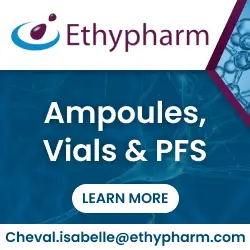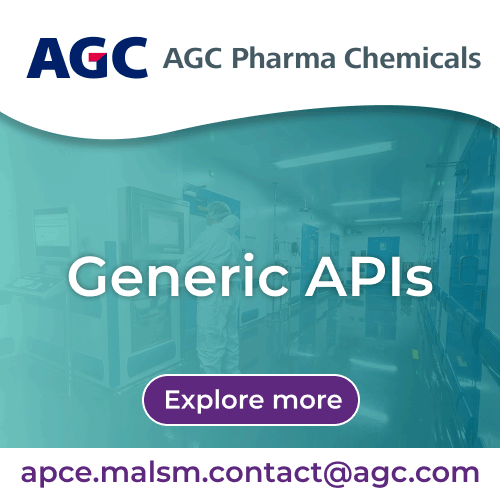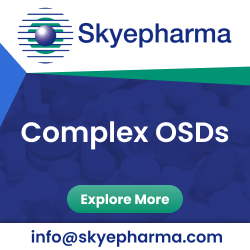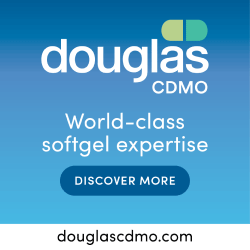Overview of the formulation development of coated pellets & granules for tablet & capsule dosage forms via pellet technology & dry & wet granulation
Q1. What are granules & pellets and what are the different types of pharmaceutical formulations which use them?
Compared to single-unit dosage forms, oral multiparticulate formulations or drug-delivery systems (e.g. pellets, granules) offer biopharmaceutical advantages in terms of a more even and predictable drug distribution in the gastrointestinal tract. Granules are aggregations of fine particles of powder, drugs, and excipients, bound together by binding agents into larger, free-flowing irregularly shaped spherical masses, which typically fall within 850 µm to 4.75 mm in size.
Granulation is one of the most significant unit operations in the production of pharmaceutical oral dosage forms. Granulation transforms fine powders into free-flowing, dust-free granules by using extrusion granulation, wet granulation & dry granulation techniques. Granules flow better than powders, increase compressibility, and have smaller surface areas than comparable volumes of unaggregated powders.
Pharmaceutical Pellets, on the other hand, are multiparticulate formulations created by the agglomeration of fine powdered excipients and drugs into small, free flowing, uniformly sized spheroids or semi spherical particles that vary between 500-1500 µm in size. There are several pelletization techniques used for the product development and manufacturing of pellets like pellets with layering technology.
Amongst various pelletization techniques, agglomeration through extrusion and spheronization method is the most widely used pharmaceutical formulation development process to form pellets. The drug product formulation development of pellets is important as pellets disperse freely in the GI tract, maximize drug absorption, and minimize local irritation of the mucosa by certain irritant drugs. The pharmaceutical applications of pellets include:
Pellet formulation combinations for oral controlled release of drugs: Different pellets with different release profiles can be combined together and co-administered in order to get controlled release capabilities and are known as controlled release pellets.
Pellets in fast dissolving systems: For an immediate release of active moieties pellets are germane delivery systems, which provide a potential advantage of oral solid drug delivery systems.
Pellets as solid emulsifying oral drug delivery systems (SEDDS): SEDDS are used in order to improve the in vivo behavior of low solubility of drugs thereby increasing their bioavailability.
Subsequently, granules and pellets are processed effectively into oral solid finished dosage forms (FDF), such as tablet and capsule dosage forms, or into multiparticulate formulations such as coated pellets & granules, beads, or uniformly sized spheroids to be filled into capsules. This is achieved via pharmaceutical formulation development services offered by contract development and manufacturing organizations (CDMO) using CDMO technologies.
Q2. What is the difference between dry and wet granulation?
Granules Development & Formulation: Most fine pharmaceutical compounds require the formulation development process known as granulation, offered by pharmaceutical CDMOs, to improve their flow properties and processing properties prior to tableting. In the pharmaceutical formulation development industry, granulation may be defined as a drug product service wherein small particles of drugs and excipients adhere together by forming bonds which result in the formation of large aggregates called granules.
Techniques such as fluid bed granulation, spray granulation and wet & dry granulation are some of the most prevalent granulation techniques used in the production of oral dosage forms. Contract development & manufacturing organizations (CDMO) offer pharmaceutical formulation development services which at times function as drug product development solutions. Granulation is one such pharmaceutical formulation development service as it enables the following product development solutions:
1. Enhancing the flow of powders.
2. Avoiding powder segregation.
3. Improving the compressibility of the powder.
4. Avoiding weight variation.
5. Producing a uniform mixture.
6. Avoiding poor content uniformity.
7. Improving compaction.
8. Producing a dust-free environment.
Granule Drug Product Development Services:
Wet Granulation is a product development & manufacturing process, wherein a liquid solution is added to a mix of dry primary powder particles using a granulating fluid. The fluid contains a solvent that is volatile, so that it can be removed from the mixture by drying while remaining non-toxic.
Typical liquids used in the product development and manufacturing of granules by wet granulation include water, ethanol, and isopropanol, either alone or in combination with each other. The solvents, mixed into the powders, can form bonds between powder particles that are strong enough to lock them together and form granules.
These granules are then compressed to obtain tablets by wet granulation techniques, such as high volume fluid bed granulation and high shear granulation which can be used to obtain uniform sized spheroids & compression mixtures for tablets.
Pharmaceutical CDMOs with advanced manufacturing capabilities in wet granulation impart flow ability to formulations, reduce elasticity problems, improve wettability, and reduce segregation potential, however, it is expensive and requires specialized equipment for production. Fully integrated CDMOs (contract development & manufacturing organizations) involved in wet granulation methods for tablet production follow these steps:
Step 1: Weighing and mixing of ingredients (excluding the lubricant)
Step 2: Preparing the damp mass
Step 3: Wet screening/ Screening the dampened powder into pellets or granules
Step 4: Drying of moist granules
Step 5: Sizing the granulation by dry screening
Step 6: Lubrication of granules
Step 7: Compression of granules into tablets
Dry granulation is a powder agglomeration process used in the drug product development industry. It improves the flow of powders by increasing the particle size of granules. The increase in the size of granules within the powders makes it easier to form them into tablets and also leads to dense and stable form used for filling capsules.
This drug product service is achieved with the help of a roller press, which can have different configurations and equipment designs, that processes fine powders into dense sheets. Contract development & manufacturing organizations (CDMO) service providers specialized in the development of solid dosage forms use compression granulation to formulate directly compressed DC granules.
The choice of usable excipients for dry granulation is limited, with anhydrous lactose being the most suitable choice amongst pharmaceutical CDMOs due to its re-compaction properties. Micro-crystalline cellulose (MCC) for roller compaction and milled lactose can also be used under certain circumstances. Dry granulation advanced manufacturing capabilities eliminate exposure to moisture and drying but are slow and not suitable for all compounds. The steps involved in dry granulation are:
Step 1: Weighing of ingredients
Step 2: Mixing of ingredients
Step 3: Compression of mixed powders into slugs
Step 4: Milling and sieving of slugs
Step 5: Mixing with disintegrant and lubricant
Step 6: Lubrication of granules
Step 7: Compression of granules into tablets
Q3. What type of benefits are offered by directly compressible (DC) granules?
The term “direct compression” is defined as the process by which tablets are compressed directly from powdered mixtures of API and suitable excipients. Direct compression (DC) is by far the simplest means of production of a pharmaceutical tablet, as it only requires the active pharmaceutical ingredient (API) to be properly blended with appropriate excipients before compression. Moisture or heat-sensitive ingredients, which would be contraindicated in wet granulation, can also be used in this type of process such as ready to compress or direct compression/DC granules.
Compression granulation is a drug product service offered by fully-integrated CDMOs and can be conducted on a pressing, slugging, tooling, or roller compactor commonly referred to as a chilsonator. It follows a three step system: milling of drugs and excipients, mixing of drugs and excipients, and lastly tablet compression. Several different granulation and compression drug development technologies are available for the contract manufacturing of granules. Directly compressible/DC granules have their limitations as they are prone to segregation and display weight variation, content uniformity, etc. however, DC granules’ pros outweigh their cons. Benefits offered by direct compressible/DC granules include, but are not limited to:
• Cost Effectiveness
• Stability
• Faster Dissolution
• Simplified Validation
• Accelerated Production Timeline
• Negligible Batch to Batch Variation in DC granules
Q4. What are the different formulation inerts used in the formulation development of granules?
Selection of formulation inerts for granules by CDMOs offering tailor made solutions should be considered on a cost/performance basis: if you don't get the performance, then it doesn't matter what the cost and wherever possible, oral formulation components should be dry powders since liquids may be problematic both in their uniform distribution and stability within the formulation. Excipients used in the drug product formulation development of granules typically include diluent, binder, disintegrant and lubricant, as well as various stabilising agents and pigments.
While dry granulation similarly uses diluents, lubricants, disintegrants, stabilizing agents and pigments during the contract development of oral dosage forms, it also utilizes glidants such as talc and colloidal silicon dioxide. Furthermore, due to the contrasting nature of wet and dry granulation CDMO technologies, the materials of the various excipients used in the finished dose development/formulation development of granules may vary.
Materials for wet granulation:
1. Microcrystalline Cellulose (MCC)
2. Lactose Monohydrate
3. Dibasic Calcium Phosphate
4. Mannitol
5. Povidone
6. Hydroxypropyl Cellulose
7. Hypromellose
8. Croscarmellose Sodium
9. Crospovidone
Materials for dry granulation:
1. Anhydrous Lactose
2. Micro-Crystalline Cellulose (MCC)
3. Milled Lactose
4. Croscarmellose
5. Crospovidone
6. Sodium Starch Glycolate
7. Sodium lauryl sulphate
Q5. What are the different aspects of granules and pellets formulation and how are they evaluated?
Granules aspects and evaluation criteria:
1. Particle Size & Shape: The size and shape of granules is important as it affects the weight, disintegration time, friability, flowability, and drying rate of tablet & capsule dosage forms. The methods used by fully-integrated CDMOs for determining granule size and shape are: Sieving, sedimentation, scanning electron microscopy, and light scattering.
2. Surface Area: It is not normally tested in granules, however, if required CDMO’s technology such as gas absorption & air permeability methods are used.
3. Density: Density influences compressibility, porosity, and dissolution. Apparatuses and techniques used to determine granule density include: Pycnometer, bulk density equations, etc.
4. Granule Strength & Friability: Knowledge of granule strength and friability is important for CDMO offering tailor-made solutions as it affects subsequent processes such as the easiness of compressibility. They are measured via compressive strength tests and friability measurements via Bolatec Friabimat and Roche Friabilator tests & air stream apparatuses.
5. Flow Properties: The flowability of a particle is defined as the ease with which it flows through specified equipment. A free-flowing particle is recognized by its ability to flow under the influence of the gravitational force in the absence of externally applied stresses. Flow can be measured via the angle of repose, hopper discharge rate, and shear.
6. Moisture Content: Granules need moisture for binding powders/granules together during compression in fixed quantities, generally 2%. It is measured by using a moisture or IR balance.
Pellets aspects and evaluation criteria:
1. Pellet Size: It is important to regulate pellet size as it directly affects other manufacturing processes of pharmaceutical pellet formulation. It is determined by sieve shaking method, microscopy, scanning electron microscopy, etc.
2. Pellet Shape: One of the prime requirements for successful coating is that the pellet formulation should give spherical and smooth surfaces. Several methods are used to validate the shape of pharmaceutical pellets: Microscopic and non-microscopic pictures of the object of an interest. Furthermore, scanning electron microscopy (SEM) is used to analyze the surface morphologies and cross sections of pellets.
3. Friability: Pellet friability and hardness are important particle characteristics as they predict pellet behavior during technological processes such as film coating, filling into hard gelatin capsules or compressing into tablets. The Roche Friability Tester is used to evaluate the friability of pellets.
4. Mechanical Strength: Mechanical strength is important as it owes to the durability of pellets. The mechanical properties of pellets can be tested via tensile apparatuses, crushing tests, stress-strain curves, etc.
5. Specific Surface Area: Surface per unit volume is called a specific surface area, it directly affects the size and shape of the pellets and is determined by gas adsorption and air permeability techniques.
6. Disintegration Time: Disintegration time is an important characteristic of orally disintegrating granules, pellets, tablets, and other dosage forms to assess drug delivery, it is evaluated via different disintegration apparatuses including the paddle, reciprocating cylinder, and flow-through cell apparatuses.
7. In Vitro Dissolution Studies: This is an important evaluation parameter which focuses on the release behavior of the dosage form. In order to establish the relationship between the in vitro release and in vivo absorption this test is carried out for different formulations in different dissolution media. In vitro dissolution studies are carried out either by using USP Apparatus I or USP Apparatus II.
Q6. What are the different types of pellet technologies?
Pellet technology is a drug development technology that allows a variety of different drug delivery profiles to be achieved by coating the ‘core’ of drug and excipient with various polymers. Drug cores are generally spheroidal in shape and have a diameter in the range of 300 to 1,700 µm.
Depending on the type of polymers used various release profiles can be achieved such as sustained-, targeted- or pulsed-release profiles. Pellet technology has therefore been investigated extensively to develop oral controlled release delivery of drugs and delayed release oral solid formulations that release the active pharmaceutical ingredients (API) in the gastrointestinal tract at predetermined rates. and used in the development and manufacturing of modified release products. Important pelletization techniques are enumerated below.
Extrusion-Spheronization:
The extrusion and spheronization method (wet mass extrusion), a type of pellet technology, is commonly used in the pharmaceutical industry to make uniformly sized spheroids and serves as a product development solution. It is especially useful for making dense granules & pellets with high drug loading for controlled-release oral solid dosage forms, with a minimum number of excipients. In order to generate the spheroidal particles, there are two main types of processes used.
The first, extrusion pelletization, allows drug potencies up to 90% and granulates active pharmaceutical ingredients (API) with excipients, which is extruded to form a core and coated by polymers. The second process is known as spheronization, where drug particles are fixed to the outside of a seed core, typically sugars, with the aid of a binder which is finally coated with a polymer. This process provides a very tight size distribution of pellets and drug potencies up to 60% are possible.
Extrusion-spheronization ensures uniform size distribution, narrower particle size distribution, ease of coating, reduced friability, low wastage and imparts numerous other advantages. Pelletization by extrusion and spheronization method creates compact, round matrix pellets from liquid and solid components. Its mild processing conditions allow temperature-sensitive substances to be used as well. Specific changes in their morphology or coating with functional polymers can improve the performance of additives.
Cryopelletization:
Cryopelletization is a process whereby droplets of a liquid are converted into solid spherical particles or pharmaceutical pellets by using liquid nitrogen as the fixing medium. This technique is usually used to carry out drug loaded pellets for immediate release as well as formulations with controlled release capabilities and are known as controlled release pellets.
Hot Melt Extrusion:
Hot-melt extrusion (HME) pellet technology converts powders/raw materials into uniformly shaped, dense pellets by forcing it through a die under controlled conditions. In hot-melt extrusion, a blend of polymer and excipients is transferred by a rotating screw through the die in a heated barrel in the extrusion apparatus. Hot-melt extrusion can create pellets with a compact structure that can resist rapid water penetration, thereby enabling the production of pellets with complex modified release profiles.
Melting extrusion can also be applied to granules and are known as melt granulation techniques. The melt granulation technique is a process by which pharmaceutical powders are efficiently agglomerated by a meltable binder. The advantage of melt granulation technique compared to a conventional granulation is that neither water nor organic solvent is needed.
Layering Technique:
Powder/ Pellet Layering Technique: The powder/pellet layering technique involves the deposition of successive layers of dry powder of drug or excipients or both on profound nuclei or cores with the help of a binding liquid. The application of the binding liquid and dry powder have to be administered concurrently. This technique is used particularly for the formulation of multi particulate controlled release dosage forms by creating controlled release pellets.
Suspension / Solution Layering Technique: This technique involves the deposition of successive layers of the solution and/or suspension of drug substances and binders on starter seeds (nuclei), which may be inert materials or crystal/granules of the same drug. Suspension layering is usually used when the desired drug loading of the pellets is low because the production of pellets from low solids content formulation is not economically feasible.
Freeze Pelletization:
Freeze pelletization is a novel and simple technique in which a molten solid carrier along with a dispersed active pharmaceutical ingredient (API) is introduced as droplets into inert and immiscible liquid columns. There are lower process variables and various advantages over other pelletization techniques in terms of quality of pellets and process costs. Pellets with narrow size distribution can be prepared with this technique.
Q7. What is MUPS (Multiple unit pellet system) and what are the benefits offered by this technology?
The Multiple-Unit Pellet System (MUPS) is a multiparticulate formulation system that has become an important and successful dosage form for immediate or modified drug release. These multiple unit systems allow complex modified release of drugs. The MUPS manufacturing process consists of 2 steps: (1) Pellets manufacturing and (2) Tablet containing pellet formulation. This equips them with the advantages of both tablets and pellet filled capsules in one dosage form. MUPS are usually classified into two separate types on the basis of the pellets used, namely matrix pellets and coated pellets. Matrix Pellets inherently contain excipients that slow down drug release by being contained within pellet matrix structures.
Coated Pellets Development & Formulation: MUPS with coated pellets vary depending on the type of coating they adorn. Coated pellets are extremely useful for a number of purposes. By applying a polymeric coating to sub-millimeter spherical particles, desired drug release profiles can be achieved. The availability of different polymers to coat pellets allows the modulation of the release rate from pellets over an extended period of time.
Coated Pellets Drug Product Development Services: Coated pellet’s coatings can be divided into seal coating and film coating types. Seal coating is applied directly to the pellets core to separate them from moisture, but it may get tacky over time. Whereas, film coating involves spraying a solution onto a bed of moving pellets in a thin layer. Different types of film coatings include immediate release and modified release ones. Complex modified release coatings are further divided into enteric coated pellets & extended release types.
Enteric Release Coating/ Enteric Coated Pellets: This type of coating provides a barrier on the oral solid medication. It prevents the drug from the acidic pH. (i.e. acidity) of the stomach. Most enteric coatings work by presenting a surface that is stable at the highly acidic pH found in the stomach but breaks down rapidly at a less acidic (relatively more basic) pH. Therefore, enteric coated pellets have complex modified release capabilities.
Extended release: In this type of release system drug dissolves over time in order to be released slower and steadier into the bloodstream while having the advantage of being taken at less frequent intervals than immediate-release (IR) formulations of the same drug.
Advantages of multi-unit-pellet system:
1. Release Profile Modifications
2. Site Specific Delivery
3. Simultaneous Delivery of Incompatible Bioactive Agents
4. Taste masking; taste masked granules can also be achieved via this method. Taste masked granules & pellets taste significantly sweeter (less bitter) as compared to non-taste masked granules & pellets.
5. Reduces Localized Concentration of Irritative Drugs.
6. Improves Safety & Efficacy
Conclusion:
This is an overview of granules development & formulation/pellets development & formulation for tablet & capsule dosage forms via various granule drug product development services/pellet drug product development services. We can conclude that multi particulate systems have undergone great development in the past decade fueled by a better understanding of their multiple roles as a suitable delivery system.
Looking at the information we have on granule drug development services, which enable granule development and formulation, we can see that granulation is one of the most important contract manufacturing processes in the pharmaceutical industry. In the commercial drug product manufacture of pharmaceuticals, finished dosage forms (FDF), APIs and excipients are granulated before compression to tablets. This enhances the flowability and adhesion of the powder particles.
Granules can be prepared by using the following techniques such as wet & dry granulation, high shear granulation, spray granulation, compression granulation, etc. Also, pharmaceutical pellets are the multi-unit dosage forms which offer improved safety and efficacy of the active pharmaceutical ingredients (API) with excellent flow properties which are then fabricated in the single dosage form. The pelletization technique produces more spherical pellets and offers more advantages than the granulation process.
Today, pellet technology represents an efficient pathway for novel drug delivery in the scope for the formulation development of different modified-release solid oral finished dosage forms (FDF). Pelletized dosage forms can be prepared by several techniques, including pellets with layering technology on nonpareil sugar or microcrystalline cellulose (MCC) beads, spray drying, spray congealing, roto granulation, melt extrusion spheronization, and spheronization of low melting materials or extrusion & spheronization of a wet mass. Coated pellet drug product development services are also available for coated pellet development and formulations.
All Suppliers
















 Ethypharm is an international Pharma company with European roots manufacturing and commercializing essential drugs all over the world.
Ethypharm is an international Pharma company with European roots manufacturing and commercializing essential drugs all over the world.









